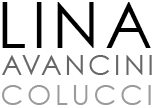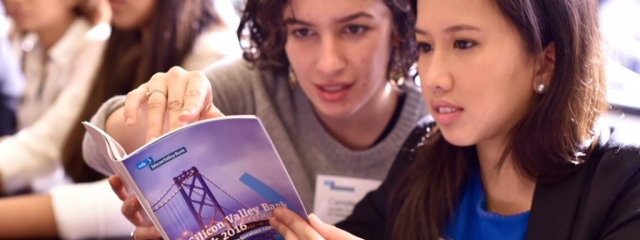Silicon Valley Bank (SVB) organized an incredible trip for 20 students from around the US to travel to Silicon Valley and experience the entrepreneurial ecosystem out there. We heard from inspiring people at Twitter, Medium, Twist Biosystems, Kleiner Perkins, Andreessen Horowitz, and more. Here is Part 2 about my experiences on the #SVBtrek. You can find Part 1 here.
SVB collects data on hundreds of companies. The data illustrates that there can be a successful Seed or Series A company anywhere in the US. 70% of the high performance companies, however, are based in California and the Northeast. More than 50% of the exits (IPOs or acquisitions) occur in California. (Source: Ashraf Hebela’s presentation)
This is mixed news for aspiring entrepreneurs: you can start a successful company anywhere, but if you’re serious about growing your company and having a successful exit, statistics say that you better move to Silicon Valley (SV). Let’s figure out why that is…
What makes Silicon Valley unique?
The speakers’ on the #SVBTrek answered this question with 3 main points:
1. A generous culture of “paying it forward”
In SV, people are generous with their time. Reputation (“smart, helpful, and a hustler”) matters a lot in the community. Entrepreneurs receive a lot of mentorship and assistance as they build their companies. Once they’ve “made it,” those entrepreneurs then “pay it forward” with mentorship to the next generation of entrepreneurs.
The founding of Y-Combinator in 2005 also changed the way things happen in SV. Y-Combinator turned the venture capital (VC) world from being a black box where VCs had all the power to a more transparent system where entrepreneurs had power as well. Y-Combinator also created a tight-knit circle of entrepreneurs instilled with the “pay it forward” culture.
Other cities in the world lack a mentorship base of people who have started successful companies repeatedly. This mentorship base is something that cannot be replicated by other cities in the near term1.

Paul Graham talking to Y Combinator Summer 2009 (Wikipedia.com)
2. Recycling of talent (and money)
Talent stays in SV. People don’t often move away. When a startup ends (either successfully or unsuccessfully), the talent in that company gets recycled into new SV ventures. Serial entrepreneurs choose to start their second, third, and fourth companies in SV. The talent pool recycles itself and becomes more experienced over time.
An important correlate of this inbreeding of talent is that trust is king. Entrepreneurs would rather work with someone that they know and trust (or that their friend knows and trusts) than a rockstar newbie out of Harvard Business School. This is why building a good reputation is important.
Money also gets recycled. Evan Williams (founder of Twitter and Medium) says he went into venture capital because he has more money than time and a desire to put his resources to work to make things happen. David Hornik, VC and co-panelist, immediately chimed in after Evan’s comment saying that this behavior is what makes SV unique. Successful entrepreneurs in other cities go buy a yacht. In SV, they re-inject their money back into the entrepreneurial ecosystem.
3. Small space. Forced collisions
“If Silicon Valley were a country, it’d be sixth in the world in GDP per capita.2” Yet it’s land area is smaller than Cape Verde3.
We heard lots of stories of a speaker going to a dinner gathering and becoming buddies with Travis Kalanick (founder and CEO of Uber). It seemed like everyone had a story about the time they met Mark Zuckerberg (founder and CEO of Facebook). And it sounded common place to rub shoulders with Reid Hoffman (founder of LinkedIn and member of the PayPal Mafia)
SV is the real-world analogy of a college campus: intelligent, ambitious people interacting in close quarters and therefore spontaneously bumping into each other. This is one of the reasons it’s easier to form relationships, come up with creative ideas, and feel intellectually stimulated in college than at any other point in one’s life. SV recreates some of that spirit and promotes fortuitous connections.

Just a small sample of the companies in Silicon Valley. Illustration by Dimitar Krstevski at https://www.flickr.com/photos/alifaan/2677816438.
Reading Between the Lines: My Interpretation of Silicon Valley
The insights above are things that the speakers on the #SVBTrek said. Direct attribution of that content goes to them. Here are the things that they didn’t say.
1. Silicon Valley is “Bro-ey” (and what that means for women)
I had a limited 4-day exposure to SV during the SVBTrek. The observations that led me to the conclusion that SV is “bro-ey” are the kind of body-language, tone-of-voice, or passing comment observations that are hard to put into words and even more difficult to convince readers of their reality. Instead, here are some stories shared by an incredible female VC when we chatted:
When I was working at Kleiner (KPCB), I would bring investments like “Rent the Runway” or “Birchbox” to Partners at Kleiner and they would say, “I don’t get it. I don’t think anyone would use this.” I’d argue the contrary and they’d say, “Okay let me ask my wife if she would use this.” They would come back the next day and say, “ My wife said she would never use this.” And the investment would be left at that.
[…] I’m sick of hearing the term ‘good guy.’ So many times a founder would pitch at Kleiner and the Partners would say afterwards, “Man… He’s such a good guy.” They could see themselves getting a beer with him. No one ever says that about a woman after her pitch. No one says, “Oh she’s such a good girl, let me invest in her.”
There’s also an attraction issue. If male VCs are attracted to a female entrepreneur they’ll have to put distance between themselves and the woman. This means they might be more hesitant to invest or, if they do invest, the founder isn’t getting the full benefit of that investor relationship because walls have to come up. They’re not getting drinks together every week like the VCs will do with guys.4
[…] One of my male friends just raised a Series A for his startup and was bragging to me about how diverse his team is. I asked him, “Are there any female investors in your Series A?” He thought about it for a second and was really embarrassed to realize that there weren’t any. He tried to explain that it didn’t even cross his mind to reach out to female investors like me (…he and I are friends!). He just reached out to the buddies that he had been getting beers with recently.
I see an ideal world as one where populations aren’t accidentally excluded. When an entrepreneur raises a Series A, they have women and people of color investing in them. Same thing when companies hire employees or VCs invest in entrepreneurs.
2. Silicon Valley Has Engineer Blinders On
I am an engineer. I got a Bachelor’s degree in Mechanical Engineering and am pursuing a PhD in Biomedical Engineering. When I asked one of the panelists (a former CTO of a major tech company) his advice for becoming a CTO, he said, “First, you become very good at coding.”
It didn’t cross his mind that a company’s core technology might not be programming. It didn’t cross his mind that a tech company could focus on rocket engines, or catheter design, or materials for slow drug release, or genetic analysis.
On the SVBTrek I quickly realized that “engineer” in Silicon Valley means programmer. I don’t have a strong opinion on whether or not programmers should earn the title of ‘engineer’ but the lack of acknowledgment that there is a whole big rainbow of engineering varieties bothered me. At MIT, no one says they are studying “engineering.” We specify that we are studying Mechanical or Electrical or Chemical or Nuclear or some other type of engineering. Silicon Valley has blinders on.
3. Horrendous Wealth Disparities
I am from Brazil. The slums and wealth disparities there are world-famous. So why aren’t Silicon Valley’s?
I walked around the Tenderloin district of SF and was appalled by the drug abuse, mental illness, and homelessness around me. Most people on the street have mental health issues and are yelling at each other, the passerby’s, or nothing at all. There are literally drugged up people fallen on the sidewalk and we (the “Silicon Valley-ites”) just step around them while walking to our next meeting.
Why aren’t people talking about this more and why aren’t entrepreneurs tackling these issues instead of the next Uber-meets-Pinterest-for-cats?
When I see people begging for money, I can’t help but think about the stocked snack bars at Facebook and Google. The price of a bag of organic-chia-seed-kale chips costs more than a homeless person spends on food per week. Silicon Valley should be embarrassed.
Throughout the weekend speakers told us to “solve the hard problems” and make sure we “add value to the people around us.” The dichotomy between the inspiring messages spoken inside these tech company headquarters and what’s being done outside on the streets was stark.
I was heartened to hear Laura at SVB talk about SVB’s Corporate Social Responsibility Program and the steps they are taking to get involved and make a difference in the Tenderloin district out of which they are based. I know other companies in Mid-Market had to sign “Community Benefit Agreements” (CBA) and I’m sure the area is better now than 5 years ago because of these CBAs. However, I am stumped as to how news about this part of SV never reached me:
The average income in the top 20 percent of Bay Area households is $263,000 greater than the bottom 20 percent.[…] The gap nationwide is $178,000. See reference.
Food stamp participation just hit a 10-year high, homelessness rose 20 percent in two years, and the average income for Hispanics, who make up one in four Silicon Valley residents, fell to a new low of about $19,000 a year— capping a steady 14 percent drop over the past five years” See reference.
Here is an idea for a Google X moonshot: Bay Area housing. [Google] could be joining forces with Facebook, Apple, Twitter and other large tech companies to push for regionwide housing solutions. See reference.
I think it’s fine that most people in Silicon Valley are pursuing wealth for themselves. It’s often more beneficial to society if people are selfish in the first part of their lives so that they can be effectively un-selfish in the second part (think Bill Gates). My concern stems from the fact that there are many people in Silicon Valley who should be transitioning into that second part of their lives but are not doing so. For those folks, and for all of us, here is a good reminder:
Recall the face of the poorest and the weakest person whom you may have seen and ask yourself if the step you contemplate is going to be of any use to him. Will he gain anything by it? Will it restore him to a control over his own life and destiny?
– Mahatma Gandhi, one of the last notes he left behind in 1948
One of the homeless camps in Silicon Valley close to the Google and Apple campuses. Photo from http://www.businessinsider.com/silicon-valleys-biggest-homeless-camp-is-being-broken-up-2014-12.
Footnotes and References
1 Multiple cities are growing their entrepreneurial ecosystem so maybe in 25 years a similar mentorship base will exist in many other cities as well.
2 http://peoplesworld.org/state-of-silicon-valley-2015-a-tale-of-two-americas/ This website claims that SV would be ranked #6 in the world in per capita GDP but I couldn’t find the raw data to confirm this statistic. Reality might range from #6 to #90 on the global GDP per capita scale.
3 www.siliconvalleyindex.org/index.php/profile-of-the-region en.wikipedia.org/wiki/Cape_Verde
4 This comment reminded me of an episode of one of my favorite podcasts, Startup. Season 2 followed two female co-founders and describes one of their encounters with a male investor that crossed professional lines: http://www.businessinsider.com/why-two-female-founders-walked-away-from-50000-2015-5









